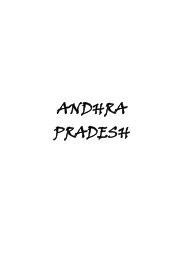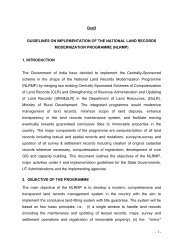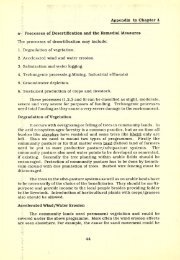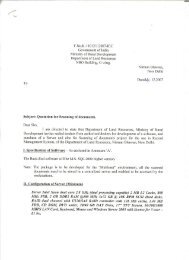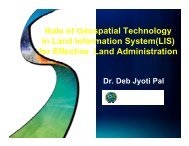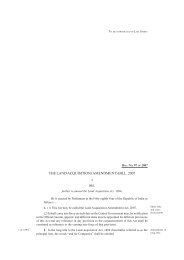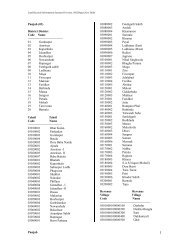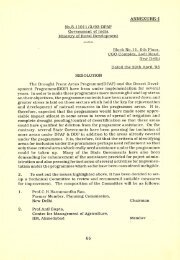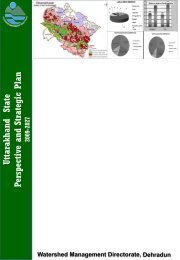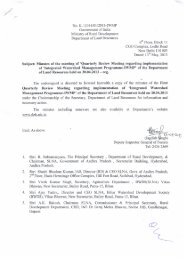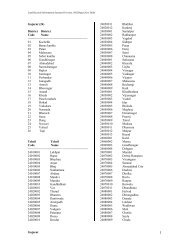Download - Department of Land Resources
Download - Department of Land Resources
Download - Department of Land Resources
Create successful ePaper yourself
Turn your PDF publications into a flip-book with our unique Google optimized e-Paper software.
RFP for ANAND and Other Seven DISTRICTS Resurvey project<br />
3 LAND RECORDS INFORMATION IN GUJARAT<br />
3.1 PRESENT SYSTEM<br />
The Government, through its organization, performs mainly two functions:<br />
Maintenance and updation <strong>of</strong> land records (textual records, including village form no 6,<br />
Hakpatrak and Village Form no 7/ 12 (Satbara-detail <strong>of</strong> record <strong>of</strong> ) and Spatial records namely<br />
village maps and field measurement books commonly known as Tippans in rural areas.<br />
<br />
Maintenance and updation <strong>of</strong> the textual and the spatial records in urban areas. In urban areas,<br />
the textual record is commonly known as the Property Card.<br />
In rural areas, the textual record is maintained and updated by the Taluka Mamlatdars at Taluka<br />
level. Earlier this record was maintained at village level by village Talati.<br />
CREATION OF DIFFERENT LAND RECORDS<br />
The <strong>Land</strong> Record starts with the field survey <strong>of</strong> land in possession and cultivated by farmers. The<br />
original survey (the survey for the first time) for the areas under present state <strong>of</strong> Gujarat had been<br />
carried out from 1880 – 1915. The technology used for the survey was chain and cross staff. The<br />
measurements for each field were written (not drawn on the map) on a paper which is known as the<br />
Tippan for that particular parcel <strong>of</strong> land. This parcel <strong>of</strong> land was assigned a unique number and was<br />
known as the survey number <strong>of</strong> this land parcel. The area based on the measurements taken for the<br />
land parcel was calculated manually by using a ready reckoner. The calculations <strong>of</strong> the area <strong>of</strong> land<br />
parcels have been preserved in a land record known as Gunakar books. The survey number, its area,<br />
the occupant <strong>of</strong> this parcel and various other characteristics <strong>of</strong> this land parcel were tabulated in a<br />
land record known as the Aakar Bandh. The sum total <strong>of</strong> the areas <strong>of</strong> all survey numbers in a village<br />
not only gave the total area <strong>of</strong> the village, but also the land area under various categories such as the<br />
cultivated land, the cultivable land, the uncultivable waste land, land under roads and other public<br />
purposes.<br />
The spatial record was also prepared by drawing the map <strong>of</strong> the land parcel based on the<br />
measurements recorded in the tippan <strong>of</strong> the survey number. All these sketches/ maps <strong>of</strong> all the<br />
survey numbers <strong>of</strong> the village were mosaiced to generate the village map. The survey number, its<br />
area and the occupant recorded at the time <strong>of</strong> survey was used to generate the village form no 7/12.<br />
The mutations (i.e. The change in ownership due to sale, the death <strong>of</strong> the occupant, etc) and any<br />
encumbrances on this land like bank loan, mortgages, etc are also recorded in village form no 7/12<br />
and mutation register i.e. Village form no 6 <strong>of</strong> that village.<br />
2/22/2011<br />
11




